Deprived of Education by War and Poverty
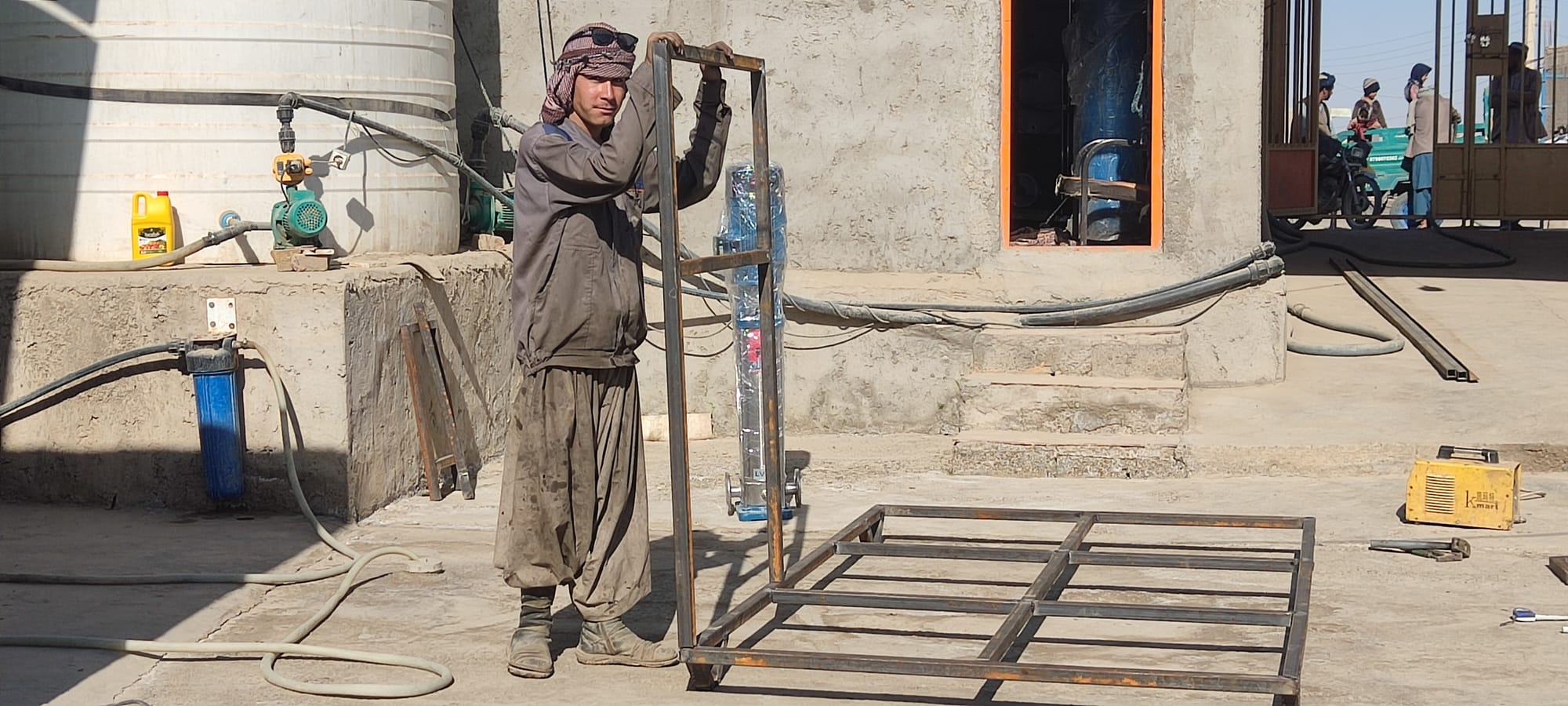
Written by Samira Wafa and edited by Abdul Ahad Poya
Alive-in is a not-for-profit, community-supported media agency that helps journalists from underrepresented communities cover stories of local and global interest.
You can support our journalists by forwarding this newsletter to others who may value these stories and by donating at the link below.
This profile is part of a broader series exploring changes regarding access to education in Afghanistan, created with support from Afghan Witness (a project of the Centre for Information Resilience), which uses open-source investigating to expose human rights violations and counter mis- and disinformation. This series will incorporate open-source techniques to further corroborate the investigative reporting. Please click here to read previous publications in the series by Alive in Afghanistan.
ZARANJ, NIMROZ — 15-year-old Lal Mohammad is a talented young welder who fled his hometown in Marjah, a district in southern Afghanistan’s Helmand province when he was just 7 years old. The teenager spends his days welding, helping provide for a family of 14 with minimal income. War, displacement, and poverty have been the main factors depriving him of education.
In this episode of One Day in Afghanistan, Samira Wafa documents one day in the life of Lal Mohammad, a teenager who lives in Zaranj, the capital of southwestern Afghanistan’s Nimroz province.
It's 8:30 in the morning, and as usual, the 60-meter street through the middle of Zaranj city is busier than other roads. The noise of motorcycles, trucks, and people heading to work fills the air. In the midst of this hustle and bustle, I see two men, one younger than the other, pulling out a metal shelf from their warehouse to cut, and later use for parts.
Lal Mohammad wears old, torn, and dirty clothes that are full of holes; his hands are barely protected by his torn gloves, though the black goggles on his eyes seem to offer some protection as he wields a cutting tool to dissect the metal pieces.
ZARANJ, NIMROZ — 15 year-old welder Lal Mohammad works at a shop in Nimroz after being displaced from neighboring Helmand province due to fighting in his home district of Marjah some 8 years ago. Videos by: Samira Wafa
I must stand at least two meters away from him because getting any closer would result in sparks burning my clothes.
Lal Mohammad spends 40 minutes cutting the metal shelf into pieces with the machine before separating them with the pounding of a hammer. He takes intermittent breaks to rest, and I ask him about his life.
His father, Abdul Mannan, is unemployed. He has five sisters and four brothers, two of whom are older, and all four are unemployed.
"My father and brothers go to the market every day to find work, but they can't find any. Some days, when they find work, they earn between 300 to 400 Afghanis per day each, but it's not consistent. As for me, I have no choice but to work for 150 Afghanis ($2.07) a day," he says.
Lal Mohammad bikes the 3 kilometers from Siah Chashman village on the outskirts of Zaranj to his workplace starting at 6 in the morning. He returns home around 7. Although what he does is hard labor, his pay, between 150 to 200 Afghanis ($2.07 to $2.76) a day, is barely enough to cover their needed grocery bill for the day.
Lal Mohammad’s family were farmers and kept livestock in Marja, but after heavy battles between Taliban groups and the security forces of the previous government, their lives were turned upside down, forcing the family to leave their home.
"I was in the second grade. One day, we were leaving school with 15 of my classmates when war broke out. My cousin was killed, our houses were destroyed, all our [livestock] was burned, and our lands vanished. We were stuck in the war for a month. My father said there's no life here anymore; we must leave. Everyone was fleeing, and Marjah District was destroyed," Lal Mohammad says.
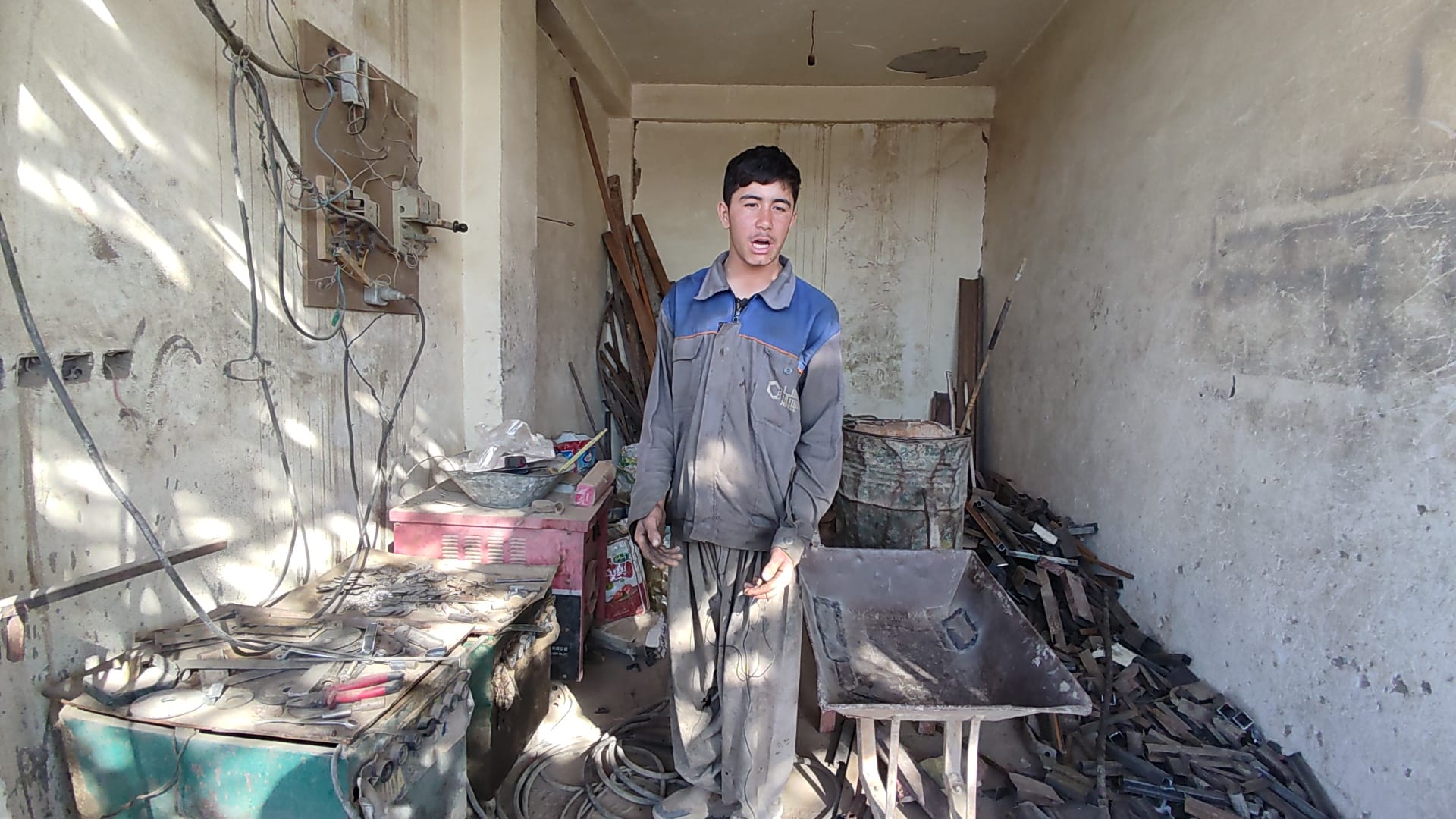
Lal Mohammad is speaking of a round of fighting that broke out in 2015. According to several media reports, a large-scale multi-country military operation was launched in Marjah District against the Taliban’s push to gain more territory late in 2015, extending well into the first half of 2016.
Alive in Afghanistan freelance journalist Naimatullah Hemat described Marjah in a previous article, "The Children Who Have Never Set Foot in School," as not only a hotbed of insurgency against the Afghan government and its foreign allies since the Taliban were overthrown in late 2001, but it was also nicknamed “kushtargah - slaughterhouse” by journalists and the general Afghan public.
While Lal Mohammad had a particular interest in studying, war and displacement prevented him from seeking education. When his family arrived in Nimroz, poverty prevented him and his siblings from continuing their education. "There is no work; there are 14 people in the house. If I study, who will feed my family?"
The 14 people include his older brother’s wife and his child.
Lal Mohammad believes that war and poverty are the two main factors depriving Afghan children and youths of education.
"We had no money when we came to Nimroz. My father had to send us to work instead of sending us to school so we could eat."
Lal Mohammad seems very distressed recounting his childhood, sometimes pausing as if he doesn't want to tell the story, the pain evident behind his words. He hasn’t experienced being a child since he was seven. What he has seen and endured have left him with bitter memories that he will never forget.
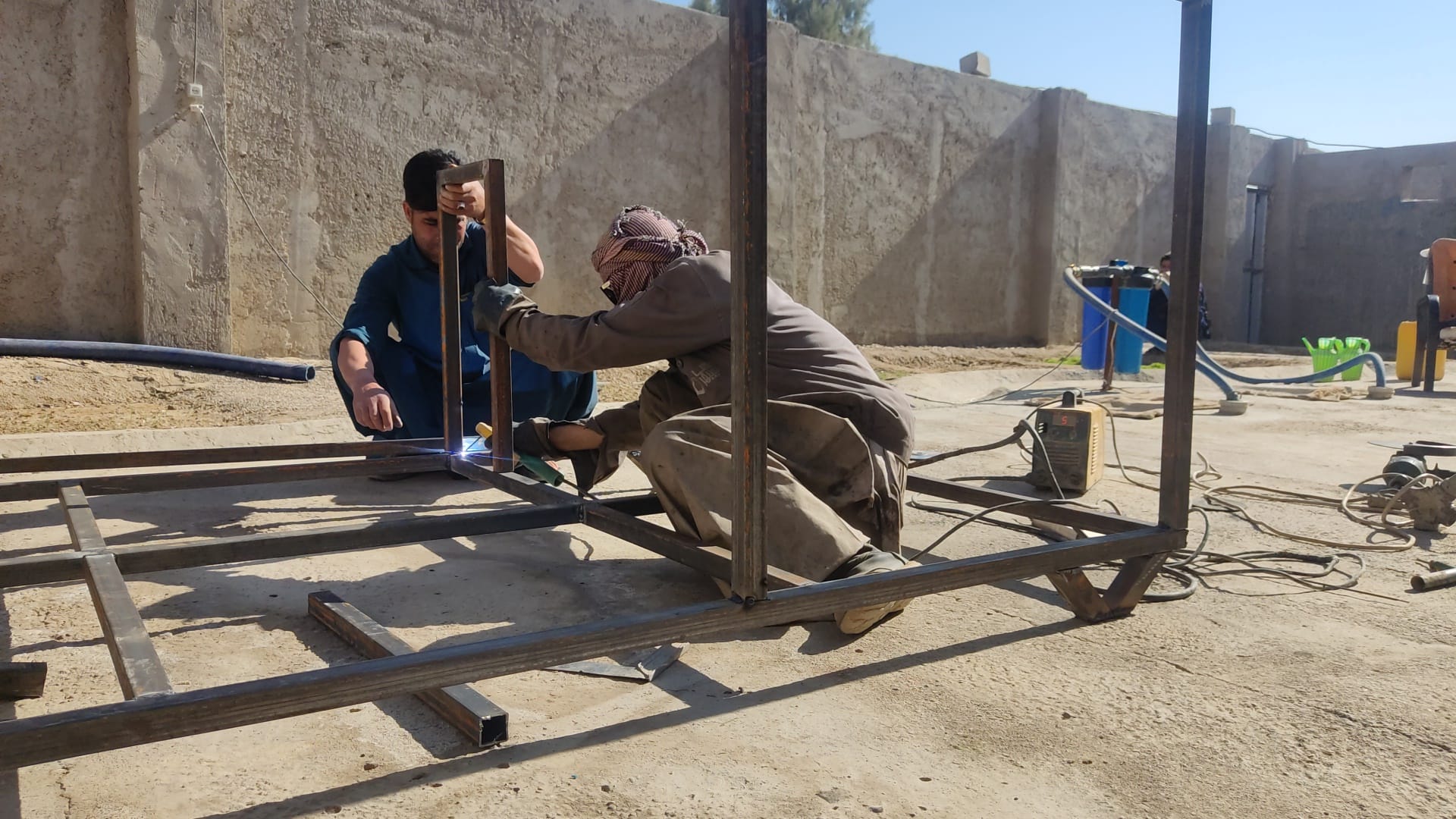
“Even though there was war in Helmand, we still had work farming for other people. We had income; we weren’t that poor. I have no good memories; my childhood was spent in war,” the teenage child says.
“We have lived with poverty and hunger for eight years, since moving to Nimroz. Life gets harder every day,” Lal Mohammad says.
Poverty and the hardships Lal has to endure are not the only challenges he and his family are facing; his mother’s illness adds to their life’s chaos. Lal Mohammad’s mother suffers from stomach and mental issues, but his family doesn’t have the money for her treatment.
“We borrowed money and took my mother to Herat once, but we don’t have money to do more treatment. I also broke my left leg falling from the bed in childhood, and it still hurts when I put pressure on it. The doctor said I need surgery that will cost 22,000 Afghanis ($303), but I can’t afford that,” Lal Mohammad says.
Welding is a tough job that requires a lot of strength to hold the machine firmly. Lal Mohammed tells me that any deviation might lead to severe injury.
"The hardest part of welding is holding and balancing the machine. I was seven when my brother brought me here. At first, I was afraid of the sparks flying off the machine, but I got used to it gradually. I lost a part of my pinkie years ago because I was weak and couldn't hold the cutting machine firmly," Lal says, showing me his right hand and the finger he cut off.
He says welding causes significant damage to the eyes due to the extreme brightness of the torch.
“This [welding] is a dark job, with fire, smoke, and damage to the eyes and lungs. Even though I have respiratory and vision problems, I have no choice but to keep working. If I don’t use eye drops for one night, I must suffer pain until the morning,” Lal Mohammad says.
Lal Mohammad dreamt of becoming a doctor or an engineer, the two jobs with the most income in the poverty-stricken country. Instead, displacement due to war and chronic poverty has pushed him to work at an age he should be going to school and being a kid. His dreams burnt away with the flames of war.
He hopes his two younger brothers, who are in the second and third grades, get to fulfill their dreams.
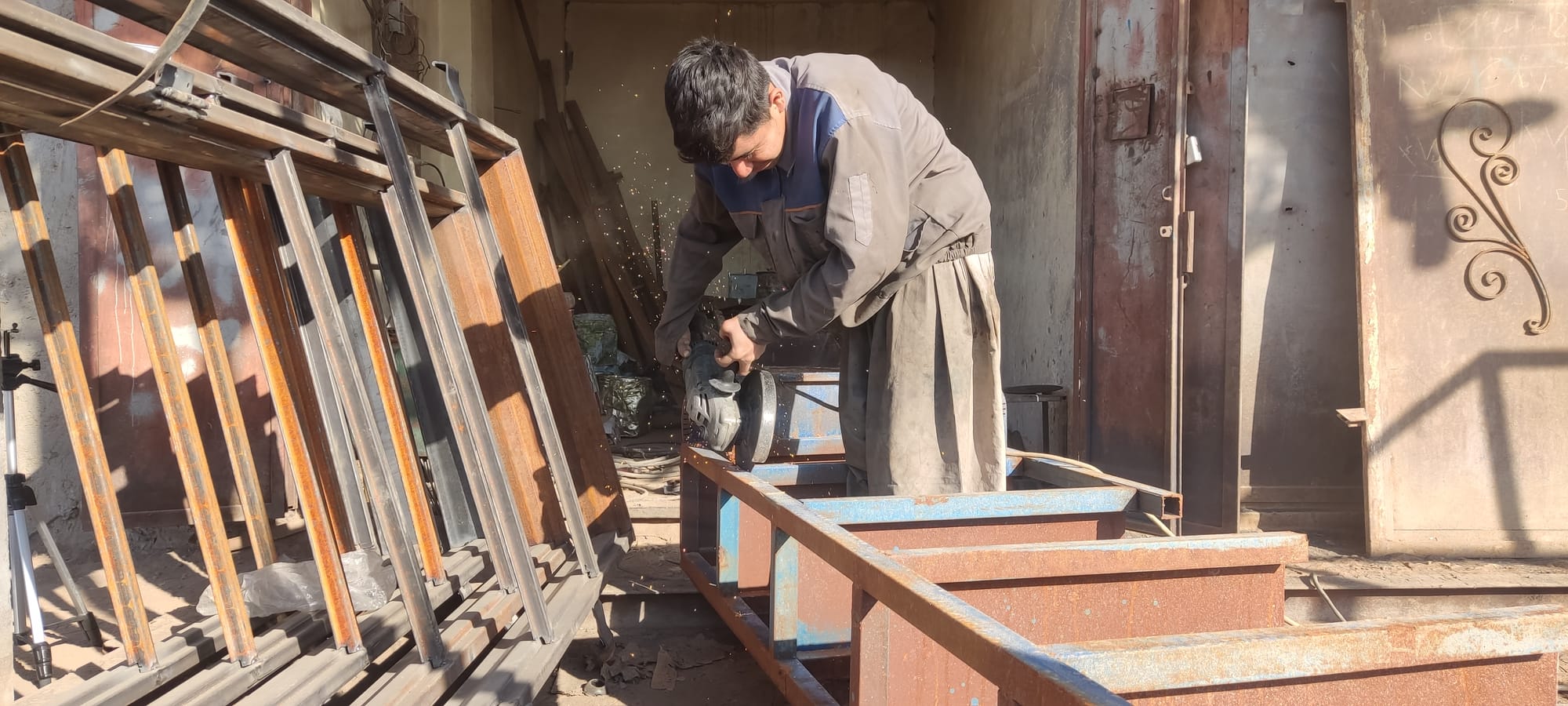
Among Lal Mohammad’s five sisters, two are married. The other four do not go to school due to cultural barriers. Please read Culture Keeps Girls Ignorant to find out more. The sisters are tailors who make clothes at home when they can find work.
Lal and his family live in a mud-brick house, which lacks a proper gate, doors, and windows. The family pays 2,500 Afghanis ($34.52) a month as rent.
“We can’t afford to repair it. We were only able to buy one window during the cold last year,” Lal Mohammad says.
It’s now 11 AM. Two 6 and 7-year-old children bring over a wheelbarrow for Lal Mohammad to fix. He immediately dons his gloves and goggles, connects the welding torch, and starts working on the wheelbarrow. He talks about the job's difficulties while fixing the wheelbarrow.
“I learned welding techniques from an experienced teacher when I started this job. I have hurt my leg and my hand working. The income from this job is low, but the danger is high,” Lal Mohammad says.
Lal Mohammad believes he would be begging for change like countless other Afghans if he hadn’t learned the craft. Lal Mohammad’s employer and the owner of the store where Lal works arrive at the strike of noon and take him to a bottling company to build.
When we get there, Lal Mohammad shows us a previously custom-made filtration system they had built, which shows me he has previous experience with the company.
Lal feels regret when he sees other people working from a desk, like a pharmaceutical clerk, thinking they have high income while he works for meager wages, not even enough to feed his family.
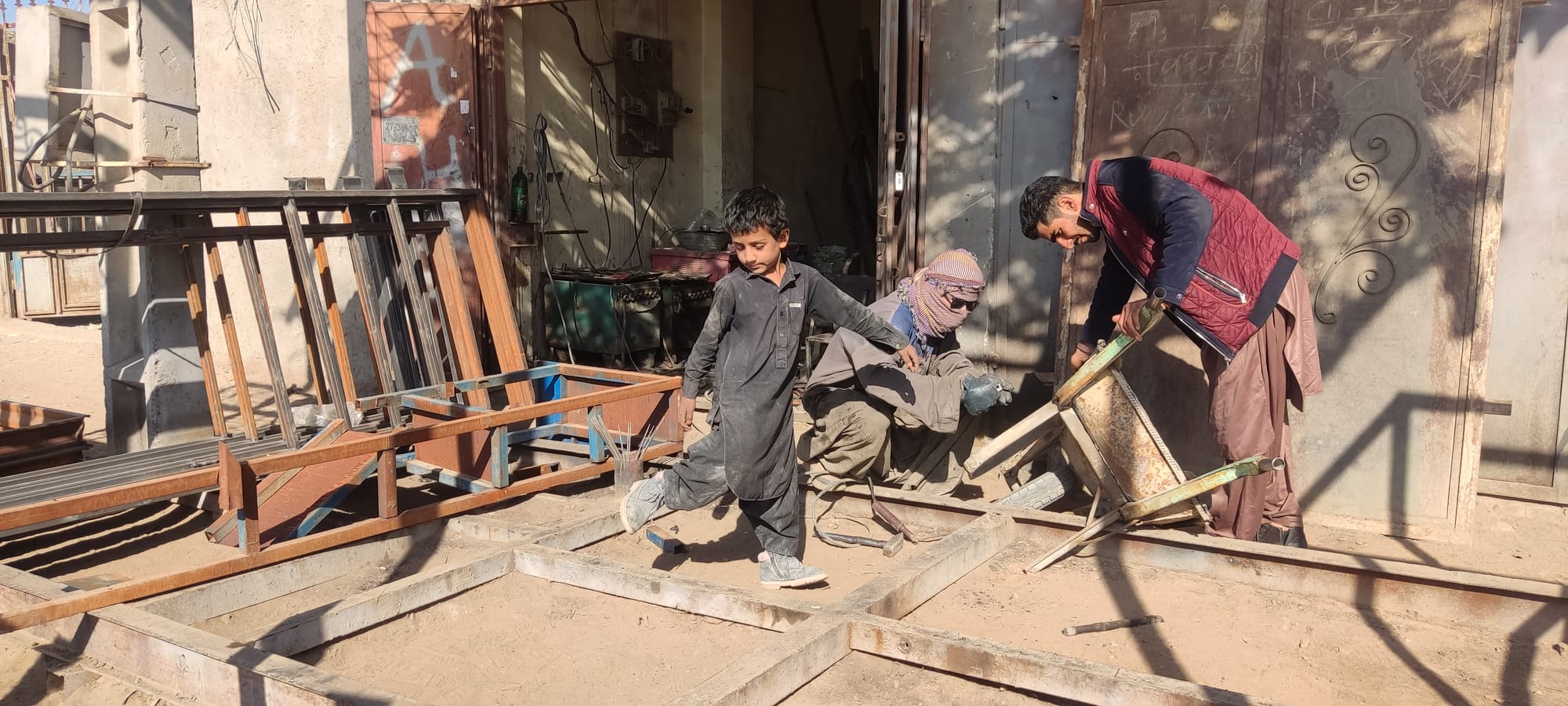
“When I sit in the shop, and I see people pass by with clean clothes, or a white medical coat, I tell myself, ‘Look at where they are, I am here earning a hundred Afghanis welding. My fate is this without studying,” he says sadly.
While waiting for the welding equipment to arrive, he expresses his feeling of never being able to wear new, clean clothes.
“Sometimes kids mock me, they laugh and say, ‘Look at him! He wears worn, tattered, dirty clothes the whole year. His shirt and pants are two different colors, he doesn’t have any money to buy himself clothes’ I feel humiliated,” Lal Mohammad expresses sadly.
Afghans wear a set of Shalwar Kameez that are normally of the same fabric and color.
“I can’t afford to buy new clothes. If I had the money, I would buy a new set every month. My boss only buys me gloves and goggles, which have become worn out after six months,” Lal Mohammad says.
Lal Mohammad starts working on the frame after his equipment arrives. He says his boss has made a deal to finish the frame, a two-day job, for 1,000 Afghanis ($13.81), 300 ($4.14) of which is Lal Mohammad’s cut. Lal Mohammad has cut the parts yesterday and is welding them together today, which according to him, will take three hours today.
Lal Mohammad’s message to Afghan youth is to seek education and become useful individuals and upstanding members of their communities if they have the opportunity.
